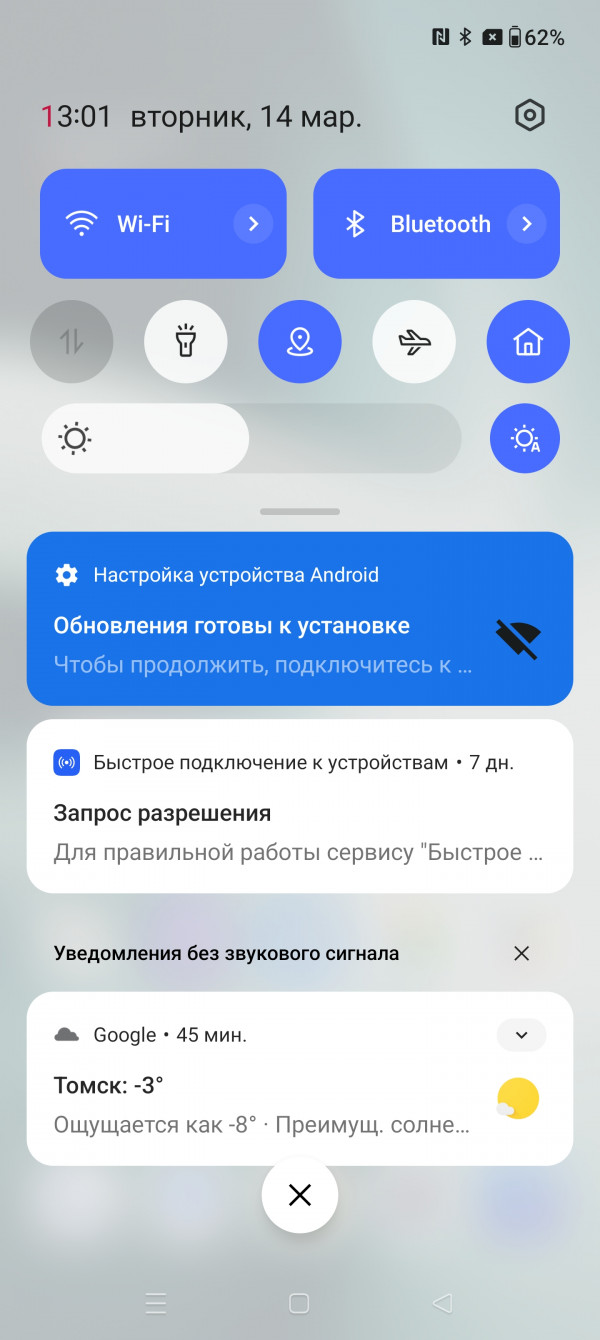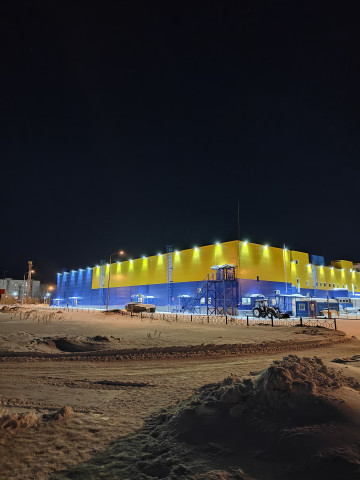Content
- Video review
- Equipment and design
- Software
- Camera
- Performance and Benchmarks
- findings
When the first buyers in Russia began to receivetheir OnePlus 11, the main topic of discussion was not the chips or shortcomings of the phone, but the threat of disabling the call function, which he displayed on the screen and which he soon began to implement. A smartphone that cannot be used to make calls is not particularly interesting, regardless of other parameters, but today we will digress a little from this problem. We have a global OnePlus 11 on the test, you can call from it, and the question of the day is whether you should call from it.

 |
OnePlus 11 Specifications | ||
|---|---|---|---|
| Network | 2G, 3G, 4G (Band 1, 3, 7, 20), 5G | ||
| Firmware | ColorOS 13 on Android 13 | ||
| Screen | 6.7″, 20.1:9, 3216 x 1440 pixels, 525ppi, 1-120 Hz (LTPO 3.0), 5,000,000-12,000,000:1, 500/800nits (min), 1300nits (peak) , Dolby Vision, HDR10+, AMOLED E4 | ||
| Chipset | Qualcomm Snapdragon 8 Gen2 CPU: 8 cores, 4 nm, Cortex-X3 up to 3.2 GHz + 2 x Cortex-A715 up to 2.8 GHz + 2 x Cortex-A710 up to 2.8 GHz + 3 x Cortex-A510 up to 2 GHz GPU: Adreno 740 |
||
| Ram | 12 GB LPDDR5X |
16 GB LPDDR5X |
|
| ROM | 256 GB UFS 4.0 |
256 GB UFS 4.0 |
512 GB UFS 4.0 |
| SIM and memory card | Two nano SIM cards | ||
| Camera | Triple, AI, HDR, Hasselblad, video recording 8K@24fps, 4K@60/30fps, 1080p@60/30fps, 720p@60/30fps, slo-mo 1080p@240fps, 720p@480/240fps Primary:50 MP, Sony IMX890, 1/1.56″, f/1.8, 1 µm, 84 degree capture angle, 6 lenses, autofocus, OIS Wide Angle:48 MP, Sony IMX581, 1/2″, f/2.2, 0.8 micron, capture angle 115 degrees, autofocus (macro 3.5 cm), 6 lenses Telephoto:32 MP, Sony IMX709, 1/2.74″, f/2.0, capture angle 49 degrees, autofocus, 2x optical zoom, 20x digital zoom, 6 lenses, OIS |
||
| Selfie | In the hole on the left, 16 MP, f/2.4, 82-degree angle, fixed focus, 5 lenses, 1080p/720p@30fps video recording | ||
| Battery | 5000 mAh | ||
| Charging | USB-C (version 2.0), 100W | ||
| Wireless interfaces | Wi-Fi 802.11 a/b/g/n/ac/ax, 2.4/5/6 GHz Bluetooth 5.3 GPS, A-GPS, Galileo, GLONASS, Beidou |
||
| NFC | there is | ||
| Biometrics | In-screen fingerprint scanner Face recognition |
||
| Sound | Stereo speakers, Dolby Atmos, LDAC | ||
| Water protection | IP54 | ||
| Dimensions and weight | 163.1 x 74.1 x 8.53mm 205 g |
||
Video review
Equipment and design

The OnePlus 11 package includes itselfa smartphone, a 100-watt charger (works like 80-watts on 100-127 V networks), a USB cable, a bunch of documentation and stickers. You can, of course, glue the phone with them and hope that it will fall on the sticker, but I would prefer to see a protective case in the box. The Chinese have it, but we have a global version on the test, so there is no cover. Well, at least the film was applied to the screen.

OnePlus 11 encased in glass and metalframe; as you might guess, the ends and the influx of the camera are made of metal, and the back is made of glass. Two colors: black matte and green glossy. The main focus of the design is the camera unit. It no longer evokes associations with a ceramic stove, as it was in 10 Pro, but I still can’t call its design successful. It looks strange and is perceived live as very artificial and clumsy. You will probably close the review after such a statement, but for my taste, the Phantom X2 Pro has better cameras. Badum-shh.




The location of the elements on the case is completelystandard, I see no reason to dwell on it in detail. The tray only accepts two nano-SIMs; memory cards are not supported. At the top right, despite OnePlus' promise to install it only in Pro-smartphones, there is a silent mode lever. OnePlus constantly breaks its promises, but this time it deserves praise. Above there is an additional output for the conversational speaker, which improves the stereo effect. Well, in general, the smartphone sounds very good. And it also has an awesome vibration motor, which took away the palm from Xiaomi. Now the best vibration is from OnePlus. It's great, of course, but is it really that important?

Now about the screen.On paper, it’s a gun, albeit a little outdated: Quad HD+, a billion colors, 120 hertz, peak brightness 1300 nits. But in practice there are problems. Firstly, PWM: only 360 Hz and with a coefficient from 50% (at maximum brightness) to 110%. Secondly, there is no forced hertzing: “high frequency mode” in practice means that the screen frequency is selected automatically depending on the application, and very often the automation selects 60 Hz. This can be corrected via SetEdit (instructions in the video review), but… why should I do this when buying a flagship? Well, thirdly, there is something wrong with the brightness; the declared 1300 nits is not even close. Touch – 120 Hz in the interface and 240 Hz in games.

Software

OnePlus 11 runs on OxygenOS 13 builtbased on Android 13. Pleasant, convenient, smart firmware. There is a swipe shutter down on the desktop, there is a simple AOD with music control (but for some reason only in Spotify), there is a function for entering medical data in an emergency, there is a cloning of a fairly wide range of applications, there are many different gestures. All this works quite stable and nicely designed. In general, OnePlus software is still good. Although not much the same as before.






























Cameras

OnePlus 11 received a main camera out of threelenses, and each one contains a Sony sensor. The basis is a 50-megapixel IMX890 sensor, that is, a slightly improved version of the legendary IMX766. There is OIS, and there is also a feeling that something went wrong, because the IMX890 is significantly smaller in size than the IMX789 found in the OnePlus 9/10 Pro (1/1.56″ versus 1/1.43&# 8243;). The wide-angle camera with autofocus uses 1/2″ The 48-megapixel IMX581 sensor is a special version of the legendary IMX586 (the first 48-megapixel camera in smartphones). Finally, 1/2.74″ works as a two-time telephoto camera. IMX709 sensor with a resolution of 32 megapixels, usually used in front cameras. Let's look at photo examples:































Good and versatile, but not a top camera.Either the exposure will be unscrewed (especially in night scenes), then the autofocus will miss, then it will turn the wrong way with the white balance. But in general, the results are worthy. Both the main camera and the wide camera take nice photos in a variety of conditions, the telephoto also does its job in sufficient light (and in insufficient OnePlus 11 relies entirely on digital zoom). Autofocus in width allows you to shoot cool macro shots, and OnePlus even implemented auto-switching modules. If you're not a big connoisseur of mobile photography and if you don't need a long-range zoom, then the OnePlus 11 will cover your needs.


The front camera, unlike all the rear ones,uses a Samsung sensor - the one with the beautiful name S5K3P9. Selfies are good even at night. True, due to the position of the module, you will always look somewhere to the side.

Video can be recorded on all four cameras, but withdifferent resolution limits: 8K@24fps or 4K@60fps for the main camera, 4K@30fps or FHD@60fps for wide, and only FHD@30fps for the telephoto and selfie cameras. You can switch between the rear cameras as you shoot. The video quality is good enough, if you don't take into account the telephoto, which is almost useless. Well, why do you need 2x zoom at 1080p when you have 4K and even 8K on base?
Performance and tests
OnePlus 11 is based on the main flagship chipset2023 - Qualcomm Snapdragon 8 Gen 2. And it is implemented here so-so. In the 3DMark Wild Life stress test, regardless of the selected performance mode, 5-10 minutes after the start of the test, performance drops sharply, dropping to 4500 points at the minimum. This is the level of good Snapdragon 870 implementations! In the CPU Throttling Test, the percentage drop is not so impressive, and it lasts longer, but at the minimum, the chip also turns into 870. 320 gypsum is its level.


How about in games?Contradictory, I tell you. Because one side of the scale has Genshin Impact and the other side has all the other games. And if you think that OnePlus 11 pulls everything but Genshin Impact, then you are wrong. At the behest of Genshin Impact, throttling is disabled, so the game runs great, heating the phone up to 53 degrees. And in other games - nothing like that, the case heats up minimally, but there are drops in performance and even screen frequency, and up to a strange cutoff of 50 fps.

Well, that is, the manufacturer of the flagship smartphonethere are three ways. Either put some kind of fierce cooling (such as fans in Red Magic and Legion), or let the smartphone warm up, or choke it with throttling to minimize heat and the negative impact of temperatures on components. OnePlus abandoned the first option, implementing the other two - one in Genshin Impact (and possibly a few more games), the other in all other scenarios. Strange decision. Stereo, good vibration, 120Hz screen and 240Hz touch enhance the gaming experience.



Battery capacity is standard: 5000 mAh.Here are the battery life numbers we got during testing (standard performance mode, maximum brightness, sound off, QHD +, high refresh rate): 19% per hour in the SuperTuxKart game, 16% per hour in the browser and 9% per hour of video display. In principle, the numbers are standard for the Android flagship, promising somewhere around 5-6 hours of screen time, depending on the scenario. After the tests, I also took pictures with the camera (~ 150 photos), sat in the browser for half an hour - and as a result, I have 23% charge after 4 hours of screen. You can switch to Full HD +, then the autonomy will be better (6-7 hours).

Charging speed, as you know, OnePlus 11for some reason it depends on the rated voltage of the network. But if you don't live in North America, Colombia, Venezuela, Suriname, Ecuador, Japan, or the Republic of China, then you have about 220 volts, and the charger thrashes at a full 100 watts. In this mode, we got a full charge (from 2%) in 24 minutes, and the phone was half charged in 10 minutes, and 90% in 20 minutes. Excellent result! For some reason, there is no wireless charging, although OnePlus 9 had it.
Conclusions

OnePlus 11 is not an “ultra-flagship”, and to perceiveit is not needed in this way. This is not a competitor to the Galaxy S23 Ultra, Vivo X90 Pro+ and iPhone 14 Pro Max. Rather, it is a competitor to the Galaxy S23+, Vivo X90 and iPhone 14 Plus. And, I must say, a good competitor. With a universal set of good cameras, fast charging, nice software, good ergonomics and excellent vibration… vibration motor. However, there are also objective disadvantages, for example, high PWM and not very effective processor cooling.
Best prices for OnePlus on Telegram!
© Oleg Lazarev.